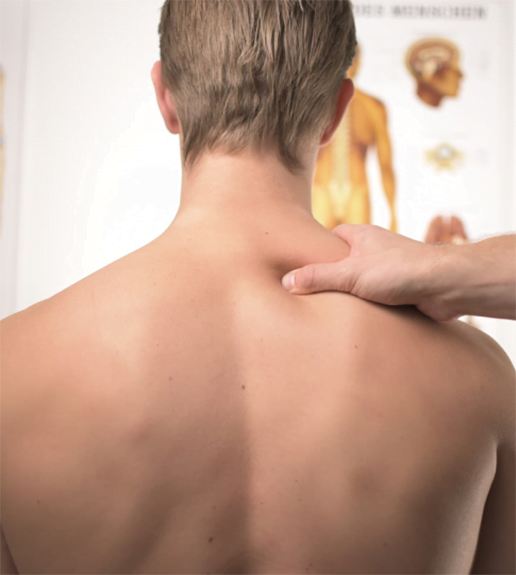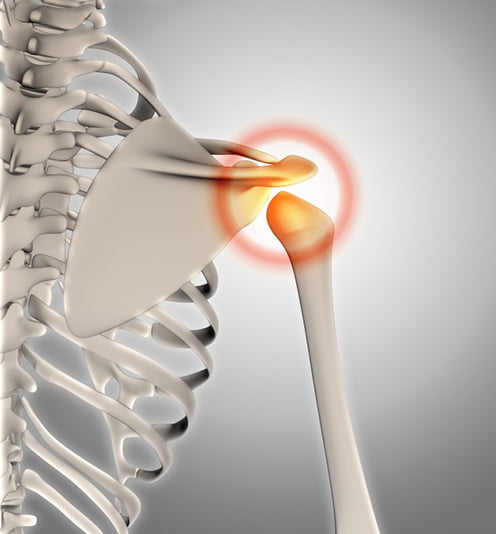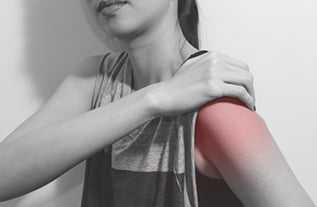SHOULDER PAIN
This ball and socket joint is the most mobile joint in the human body. Stability is compromised for this agility and leaves the shoulder as the most fragile joint. Rotator cuff tear, dislocation, and clavicle separations are commonly seen in the millions of shoulder injuries recorded each year.

Types of Shoulder pain

Acute injury
Burning sensation in the deltoid, bicep, rotator cuff, traps, or neck

Referred pain
Referred or diffuse pain in the neck, traps, shoulder, arm, or hands
Causes of Shoulder pain
- Rotator cuff tear
- Osteoarthritis
- SLAP tear (bicep tendon to glenoid labrum)
- Laxity of tendons and ligaments
- Bursitis causes pain and increases likelihood of a rotator cuff tear
- Fracture, dislocation, or acromioclavicular (AC) separation of the spine, shoulder, or spine
- Inflammation of the traps, neck, or bicep tendon
- Glenoid dysplasia
- Shoulder impingement
- Peripheral artery or vascular disease
- Adhesive capsulitis (frozen shoulder)

Symptoms of Shoulder pain

- Generalized arm and shoulder weakness
- Numbness, or tingling (most notably in the bicep, fingers or trapezius muscle)
- Visible deformity such as one shoulder drooping below the other
- Difficulty raising arm above the head and general arm immobility
- Mechanical pain
- Discomfort such as a grinding, grating, popping, or burning sensation
Complications and Risks
If left untreated the shoulder mobility and pain may continue to decrease. The shoulder is a sensitive unit, any imbalances may lead to other common shoulder and bicep injuries.
Risks Factors
- Repetitive awkward motion such as throwing a ball or lifting items above your head
- Excessive use
- Spinal imbalances, such as laxity caused by poor posture
- Shoulder dystocia (caused during birth) leading to nerve damage or fracture


